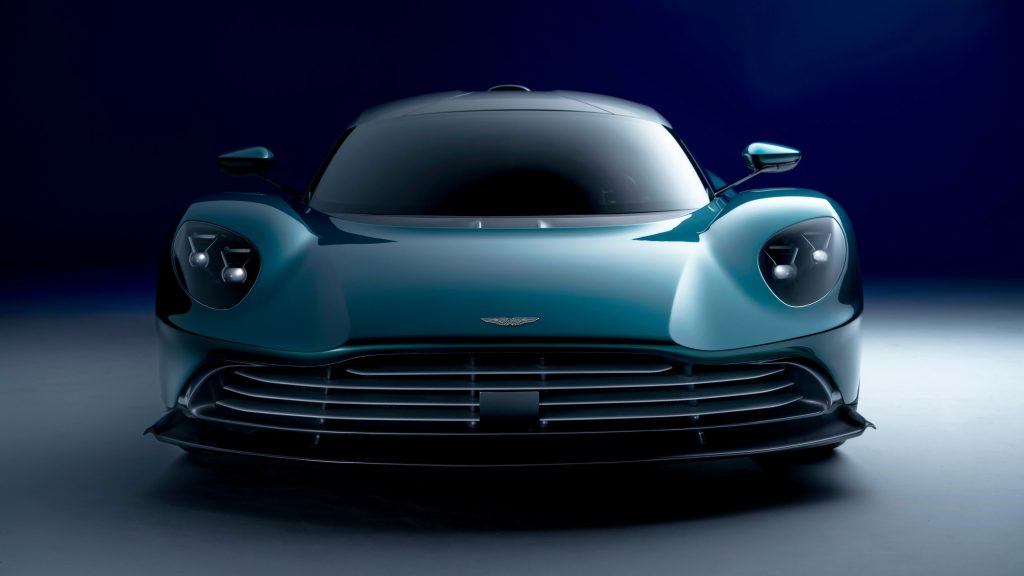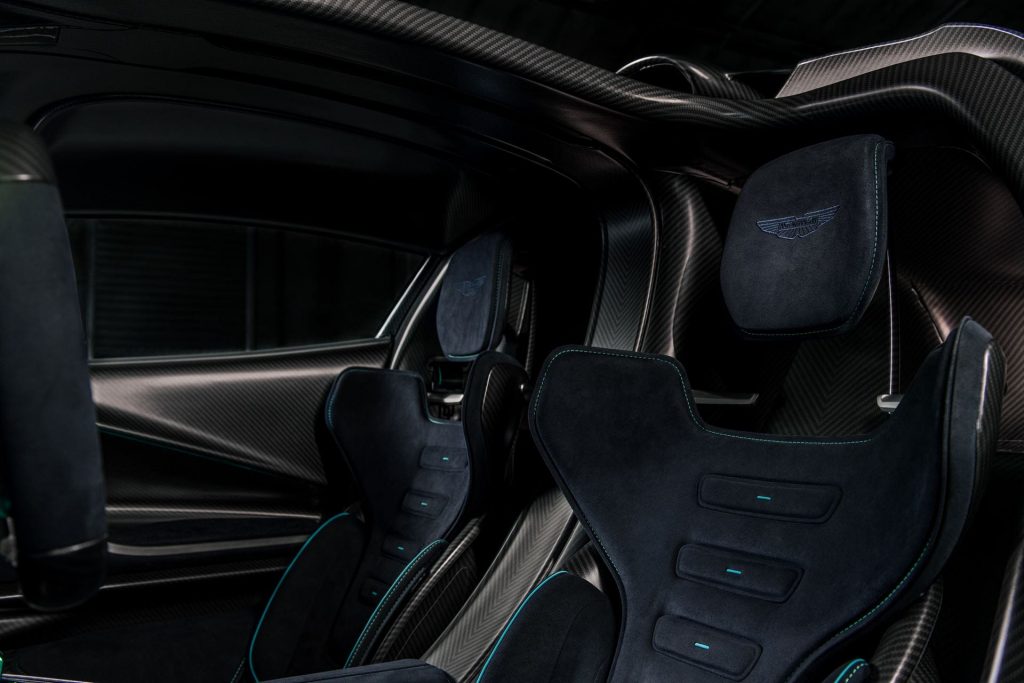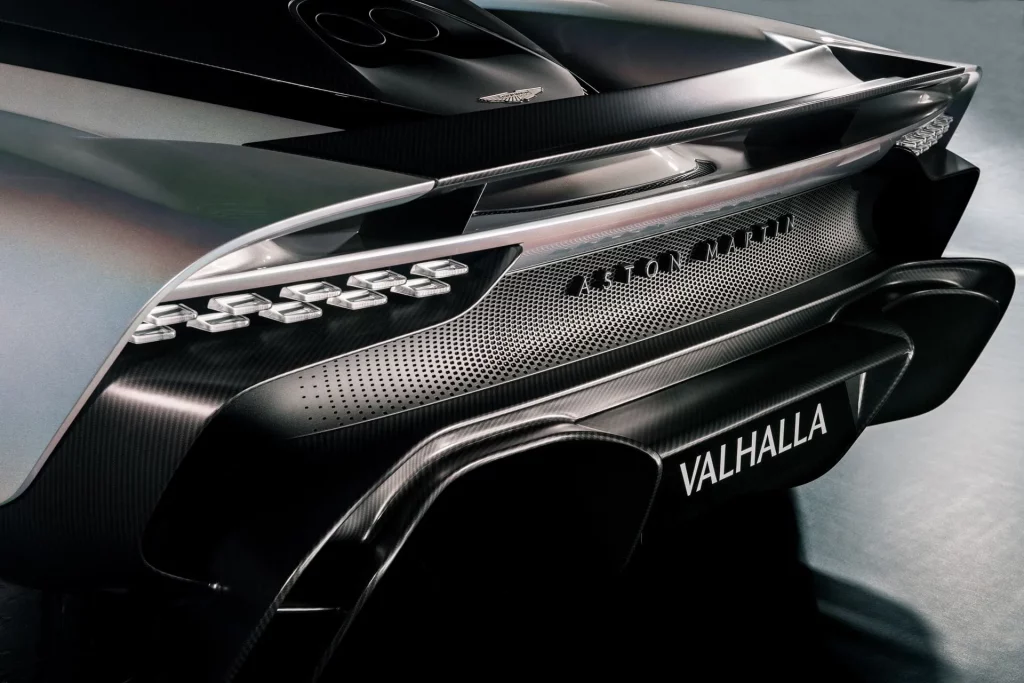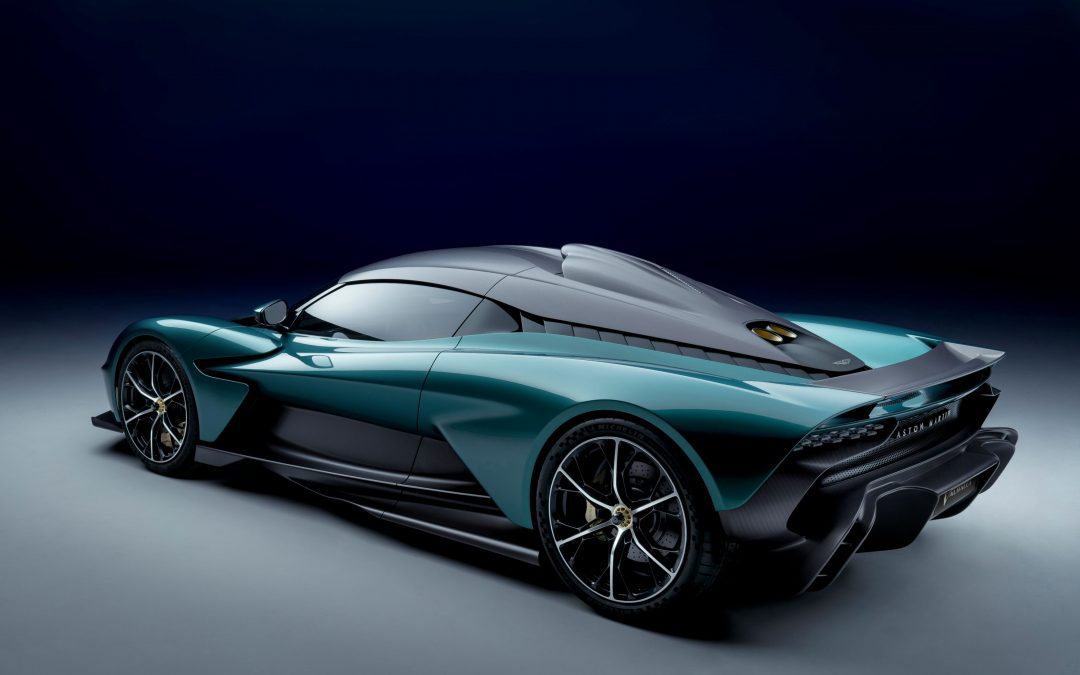It looks like 2024 will finally be the year that the long-anticipated Aston Martin Valhalla will hit our roads. First seen at the Geneva Motor Show in 2019 in collaboration with Red Bull, the Valhalla was a vehicle of the future, with many wondering if it will ever actually be released.
Fast forward to the present day and the car has seen significant evolution, and it’s been confirmed it will be a mid-engine hypercar with a hybrid powertrain in the vein of the Ferrari SF90.
There’s one key factor however that sets this beast apart from what we’ve already seen, it’s derived from Formula 1 technology, creating the ultimate everyday performance car.
Here’s what we know.
Initial Reveal, 2019
At the Geneva Motor Show in 2019, Aston Martin teased a futuristic hypercar codenamed “AM-RB 003”. It was a marvel of modern engineering and looked like something straight out of a Star Wars film.
Revealed as a concept car, and nicknamed ‘Son of Valkyrie’, it was designed in collaboration with the Red Bull Formula 1 team to showcase the future of Aston Martin and prove that they had the ability to rival the Ferraris, Lamborghinis and McLarens of the world.
Since then, the vehicle, now named ‘Valhalla’ saw many iterations, even featuring in James Bond: No Time to Die. However, the version released this year is much different to anything we’ve ever seen before, in fact, it looks like a different car.

Engine, Transmission, Performance
The best part of the Valhalla will surely be its handling and performance. The engine is a combination of a twin-turbo 4.0 litre V-8 (Taken from the Mercedes AMG) and a plug-in hybrid system that together generates 998 horsepower. For some perspective, that’s 4 times the horsepower of a small 4-seater plane.
There are a total of 3 electric motors, one to power the rear wheels, the V8 engine and acting as a starter generator, and two more to drive the front axle, where the driver can use torque vectoring to shuffle power between the wheels, assisting with turning and handling.
The motor feeding the rear wheels will do so via an eight-speed dual-clutch automatic transmission. Combined with an electrically assisted gearbox, it will allow for the car to have an electric reverse as well as an electronically controlled limited-slip rear differential for enhanced road handling.

Finally, the supercar will have adaptive dampers and two-stage springs, adjustable for an ultra-low track mode, and an EV mode is available for a very short all-electric range.
The performance and handling of this car will be out of this world, reaching top speeds close to 217mph (350km/h) and achieving 0-60mph (0-100km/h) in 2.5 seconds.
Yeah, it’s quick.
Carbon Fibre Features
The Aston Martin Valhalla has utilised carbon fibre technology to its utmost potential.
The central tub, ceramic brakes, dihedral doors, bodywork and engine cover are all set to be made of carbon fibre, making the car extremely lightweight, and enhancing manoeuvrability and aerodynamics.
It will also benefit from a “fully active aerodynamics system at both the front and rear ends of the car which will generate over 600kg (1,300 pounds) at 240km/h (150mp/h)” said Aston Martin.
Despite having all these features, the street-legal car doesn’t have to comply with strict motorsport regulations designed to limit downforce, meaning the team has room to move when setting limitations.
Finally, the front of the car will feature an exaggerated version of the company’s iconic grille, giving an everlasting impression to onlookers.

F1 History in a Hypercar
Undergoing extensive research & development, the Valhalla will drive off the shelf with an extensive list of features derived from Formula 1 cars.
So much so that the Aston Martin Performance Technologies (AMPT) division is helping with the dynamics, aerodynamics and materials of the Valhalla using insight gained from the cars raced by F1 drivers Fernando Alonso and Lance Stroll whose father Lawrence is the executive chairman at Aston Martin.

Claudio Santoni (Engineering director at AMPT) said,
“It’s a great advantage for a car manufacturer to have access to the unique skills and knowledge of a Formula 1 team. F1 engineers are constantly pushing the boundaries in the pursuit of performance and have developed rapid problem-solving tools. With this knowledge ‘in-house’ we can seamlessly bring F1 expertise to road car development.”
The interior ergonomics take “direct cues” from F1 cars, along with the seating style and position, which raises the drivers’ heel by a false floor optimised with support from AMPT.
F1 tech is woven into the under-body aerodynamics, and the aero toolbox also includes multi-element wings and a front wing that can lie flat to reduce drag at high speed – much like the DRS system used by F1 cars to aid overtaking.
The Design Evolution
Back in 2019, when first encountering the then-covered Valhalla, the initially disproportionate scale hinted at an unconventional length-to-height ratio.
In an interview between WHICHCAR? and Aston’s Design Chief, Marek Reichman, emphasis is put on the significance of inviting observers to scrutinise a car under a cover, isolating its form from external influences like colour and graphics.
“I normally do that as one of my lines – I ask people to look at a car under a cover because then your mind is not influenced by the graphic language, the colour, the proportion of glass to body, the wheels – it’s purely the form. That’s the first thing your brain sees.”
The Valhalla’s design evolution from the original 2019 concept showcased in Geneva reflects a purposeful shift towards a more assertive visual language, much like Porsche has done with their evolution of the 911.
Notably, the addition of two cylinders to the engine brought forth specific design challenges, promoting a transformation from the initial concept to the visually exciting production model under Reichman’s guidance.
Production Bottlenecks
Multiple design freezes were seen throughout the development and build of the car, largely due to balancing investment, legislative compliance, and meeting deadlines.
Reichman sheds light on the collaborative dynamics and occasional roadblocks in the development journey, resulting in the Valhalla’s exceptional design influenced by the experience of creating the Valkyrie.
The collaborative efforts between the design and engineering teams were of utmost importance during the build, and Reichman highlights how imperative this was in maintaining standards.
“At the end of the day, it’s a partnership and sometimes in partnerships, you have a bit of a tussle, and one wins one week and the other wins the next week. That’s how Valkyrie developed.”
Functional Aesthetics
One key metric the team at Aston Martin needed to hit was that the car had to look outstanding, giving off sleek and futuristic looks to suit the framework and engine it’s built upon.
Reichman highlighted the importance of the integration of form and function to achieve aesthetic appeal.
Functional elements such as diffusers and underbody aerodynamics significantly contribute to the performance-orientated design goals, including ambitious Nürburgring lap time targets.

Reichman’s commitment to embedding engineering into the car’s core, allowing the body to boast beauty, is a recurring theme.
“If any of my team sketches something that’s a hole which isn’t an air outlet, I’d say ‘What’s that? Do the aero guys need it? No? Get rid of it.’”
The philosophy of keeping the surface language pure, with minimal outlets and a focus on aero functionality, showed Marek’s dedication to a synonymous blend of form and function in Aston Martin’s design mantra.
Inspirations were also a key factor in the design and build process, with the iconic Lamborghini Miura a key reference point. This provided Reichman’s personal dimension to the Valhalla’s design story.
How Much Will It Cost?
The Aston Martin Valhalla is expected to cost around USD 800,000 (AUD 1.4 million).
But the hefty price tag is not the only limiting factor. There will be no more than 999 built.
The scarcity of the car means enthusiasts will be pulling every string they can to get their hands on one of these, which is sure to be a collectible in the near future.
Conclusion
After many years of hype and secrecy, the Aston Martin Valhalla will finally hit our streets this year.
With 90% of the dynamic characteristics and vehicle setup happening in a simulator, it leaves only the final stages of testing on open roads before we see the cars be privately owned.
If you’ve managed to get your hands on one, kudos to you. If not, don’t be disheartened, seeing them on the street alone will be a jaw-dropping sight.
One of the most hyped cars of 2024 boasts a promising look for the future of Aston Martin and the hypercar industry as a whole, and it’s likely other luxury car manufacturers will be looking to follow suit.
Make sure you also enjoy our review on the Porsche 911 Sport Classic.

